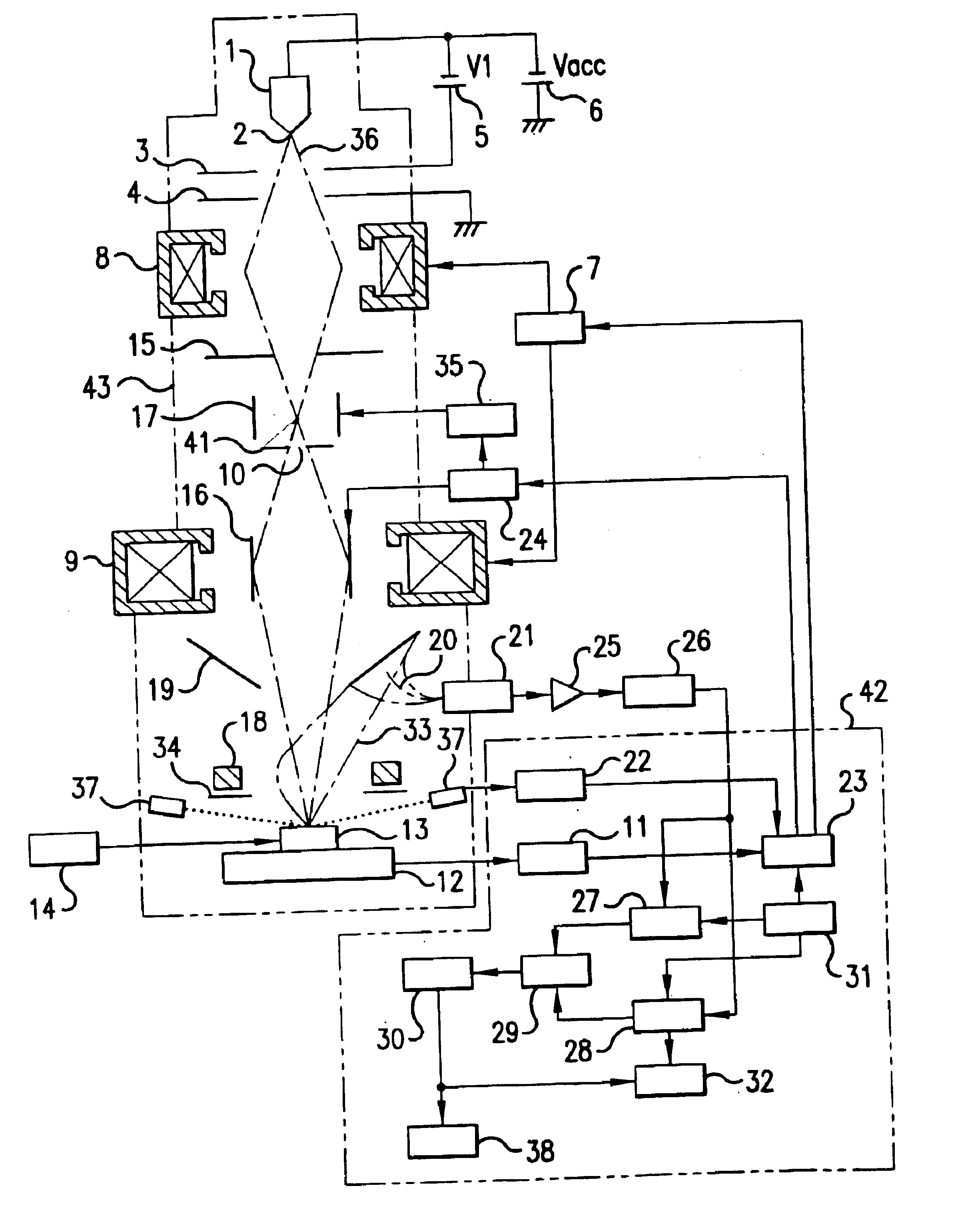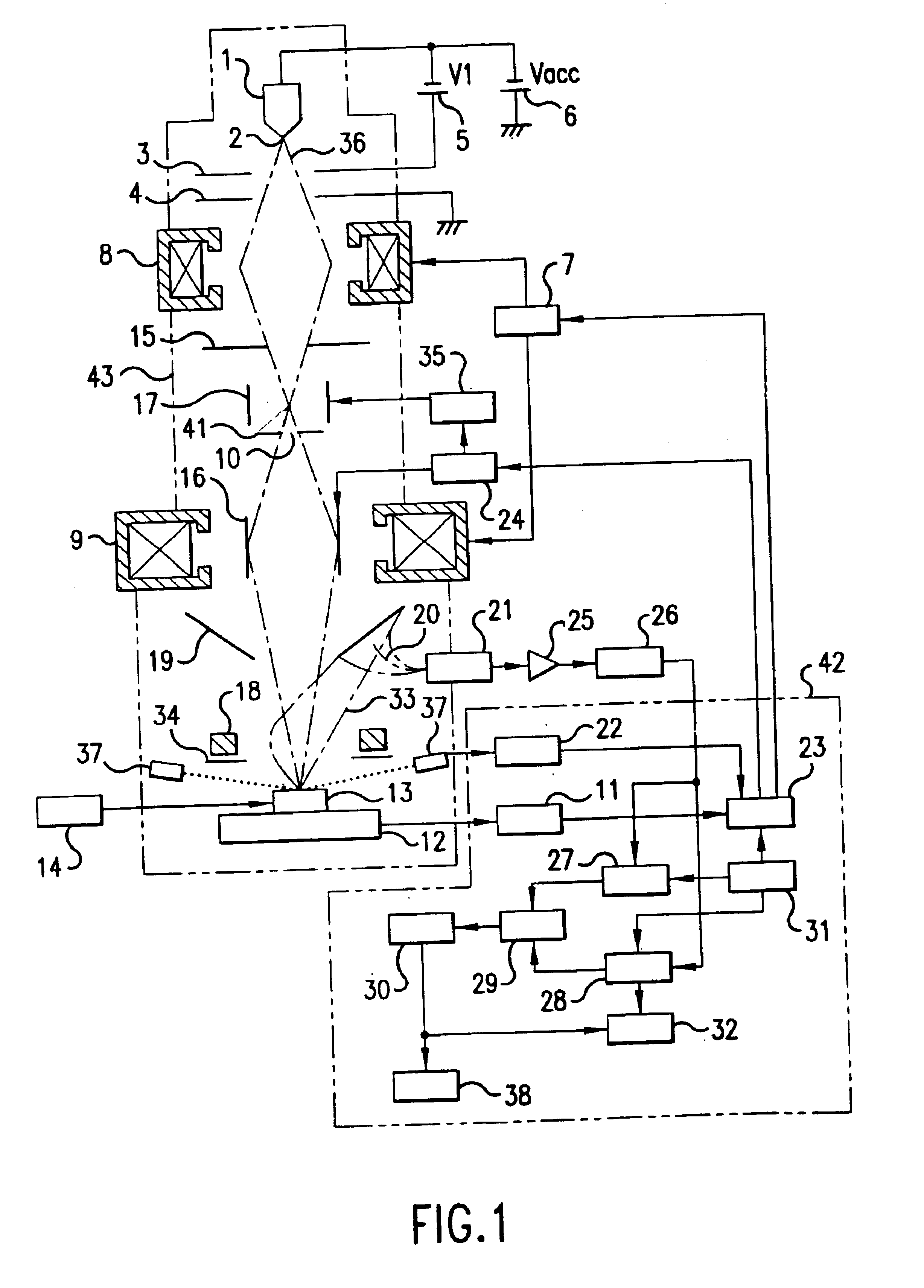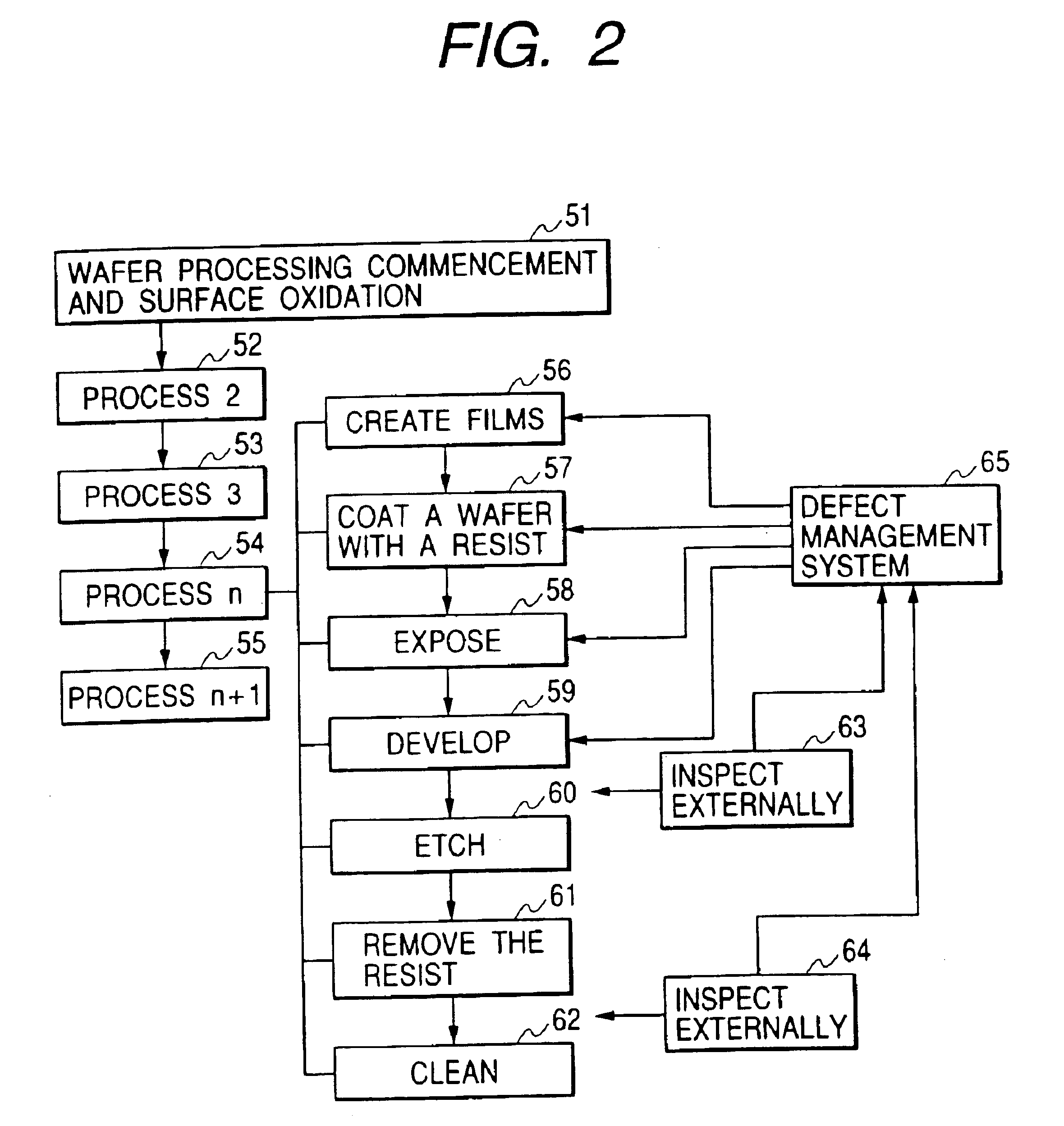Method and an apparatus of an inspection system using an electron beam
an inspection system and electron beam technology, applied in the direction of semiconductor/solid-state device testing/measurement, image enhancement, instruments, etc., can solve the problems of slow scanning speed, inability to locate the location of a defect on a wafer, and the time it takes to complete the processing steps becomes very long, so as to increase the speed of scanning a specimen
- Summary
- Abstract
- Description
- Claims
- Application Information
AI Technical Summary
Benefits of technology
Problems solved by technology
Method used
Image
Examples
Embodiment Construction
[0035]The present invention will become more apparent from a careful study of the following detailed description of a preferred embodiment with reference to the accompanying diagrams.
[0036]FIG. 2 is a block diagram showing a flow of a general process of fabricating a semiconductor device. As is obvious from the figure, in a process of fabricating semiconductor devices, steps 51 to 55 are repeated to create a number of patterns of semiconductor devices on wafers. Each of the steps to create a pattern comprises roughly a film creation step 56, a resist coating step 57, an exposure step 58, a development step 59, an etching step 60, a resist removing step 61 and a cleaning step 62. A circuit pattern will not be created normally on the wafer unless fabrication conditions are optimized at each of the steps.
[0037]External inspection steps 63 and 64 to inspect a circuit pattern are provided between the steps described above. When a defect is detected as a result of the inspections carried ...
PUM
| Property | Measurement | Unit |
|---|---|---|
| beam current | aaaaa | aaaaa |
| energy | aaaaa | aaaaa |
| size | aaaaa | aaaaa |
Abstract
Description
Claims
Application Information
 Login to View More
Login to View More - R&D
- Intellectual Property
- Life Sciences
- Materials
- Tech Scout
- Unparalleled Data Quality
- Higher Quality Content
- 60% Fewer Hallucinations
Browse by: Latest US Patents, China's latest patents, Technical Efficacy Thesaurus, Application Domain, Technology Topic, Popular Technical Reports.
© 2025 PatSnap. All rights reserved.Legal|Privacy policy|Modern Slavery Act Transparency Statement|Sitemap|About US| Contact US: help@patsnap.com



